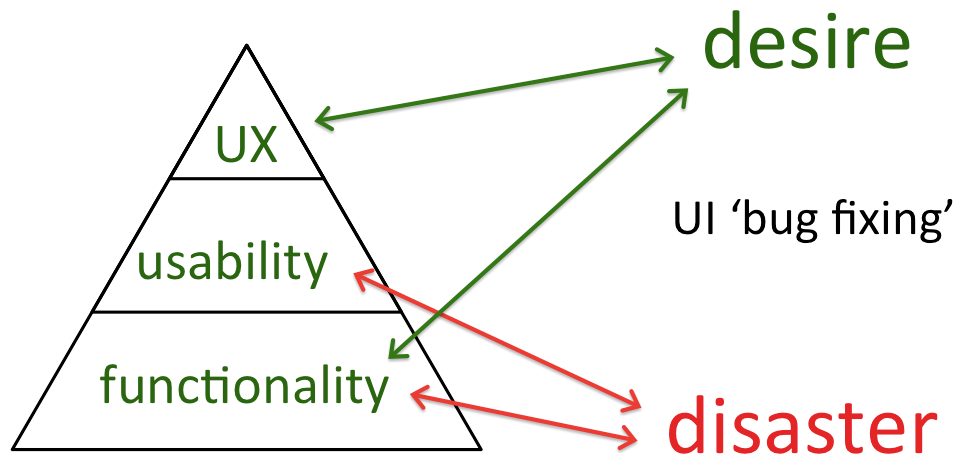
Human-Computer Interaction 3e Dix, Finlay, Abowd, Beale
There are always more things you would like to do when creating or updating a system: problems to fix, new features to add, ways to make what you have easier to use, more slick, more appealing.
In chapter 5, we say that you need to find trade-offs between design goals and available resources, but that is easy to say. How do you decide which to do?
When thinking about practical design decisions, two words can be helpful: desire and disaster.
What are the things that make a product or application a non-starter? This is not about usability friction, all those interface gripes (which I keep getting annoyed at in other people's products); we can live with a lot of pain so long as we get things done. Indeed I keep using Word, Dreamweaver, and this RSI-inducing Mac, even though I constantly complain about them all.
No, the things that are critical are those which make us think, "Enter my address book into yet another application? NO WAY!". Total disaster is typically about failures of functionality, not usability 'problems', unless they are so severe that we cannot do what we want to do at all.
What makes your eyes light up when you see or think of a new product or service? You may use a product because you are told to as part of your job, or because you have to because it is the only way to do something, like book an airline ticket – but what makes you adopt something for the first time when you have free choice?
It is clearly neither good usability nor good engineering that has made Apple successful, but desire. This is not simply user experience, which is often incremental, though it may be about beautiful aesthetics; however, it is again more likely to be about core functionality that really makes a difference to some small area of our lives.

There are things we can do to improve a product where for each unit of effort we put in, the product gets a little better. These are important, and they are what most usability testing helps us do. However, it is at the points of inflexion where small amounts of improvement make an enormous difference, either rescuing a product from disaster or enriching it with desire.
If you are creating a new product and find yourself 'fixing' usability problems, you have probably already lost. Instead it is in design techniques for 'peak experience' (Dix, 2010), utter sorrow or utter joy, where success belongs; this may break with normal usability processes, maybe focusing on a single user and only later generalising. When a product is established, we can worry about the little things, but for a new product it is at these extreme points, disaster and desire, where we must focus our effort and creativity. And, between the two, perhaps most important of all, is desire.
text - Alan Dix © 2011,2016